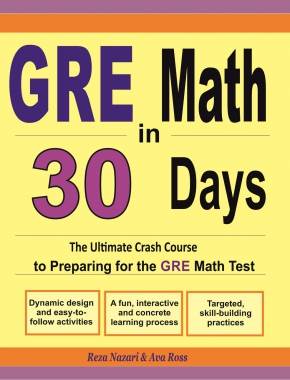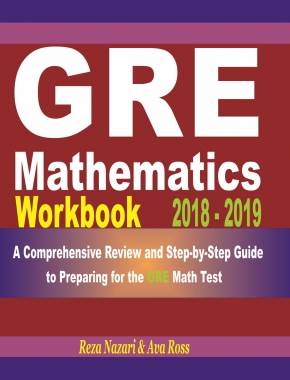What Kind of Math Is on the GRE?

The graduate records exam (GRE) will most likely be required if you want to attend graduate or post-graduate programs.
It’s a test designed to see how well you’ve picked up the math you’ve been learning over your undergraduate program. Luckily, it’s not a specific test for your program, so much of the math is still at the high school level.
This article will take you through what kind of math is on the GRE so that you can prepare and get into your graduate program with the least amount of effort spent on GRE practice and learning.
The Absolute Best Book to Ace GRE Quantitative Reasoning Test
What Math is on the GRE?
For the general GRE test, you will find math topics in the quantitative reasoning section. However, it’s important for your studying to know that there will be no trigonometry, calculus, or any type of high-level math required that wasn’t taught during high school.
The topics can be broken down into four main sections.
GRE Arithmetic
You’ll need a reasonable understanding of arithmetic, which most people should have. Still, you’ll want to brush up on the topics to ensure there is nothing you’ve forgotten or tricky questions that may arise during GRE-specific testing.
Make sure you can find percentages, fractions, absolute values, and number lines; find the root value of numbers. You’ll want to focus on the properties of integers as this is an often tested subject.
GRE Algebra
You’ll want a good understanding of general algebra, such as simplifying expressions and linear equations, including graphs of linear equations like slope and intercept lines. However, some specific areas you need to focus on are rules of exponents, quadratic equations, and word problems.
GRE Geometry
The GRE often has many geometry problems for you to solve, so this should be a topic you spend a lot of time on. You won’t need to construct any proofs, just solve problems.
Review topics such as parallel and perpendicular lines, circles, triangles, quadrilaterals, congruent and similar figures, including three-dimensional figures, area, perimeter, volume, and angle measurement in degrees.
GRE Statistics and Data Analysis
As with other topics, GRE statistics and data analysis is at a high school level or introductory level. So, you won’t need to learn inferential statistics.
Topics that you may be tested on are mean, median, standard deviation, range, and percentiles. In addition, you’ll need to interpret data in tables and graphs, like line, bar, circle graphs, and scatter plots, boxplots, and frequency distributions.
Consider reviewing probability, like a component or independent events: probability distributions or conditional probability.
Final Thoughts
The math portion of the GRE test should be easy for you. However, it does require you to brush up on topics that you may not have thought about in many years. Don’t assume because this is high school level math that you’ll breeze through it. Many topics may have been forgotten and will need to be reviewed.
Consider getting a study guide, or tutor, or at least take practice tests so that you can understand any areas that require some specific work for you to study. Unfortunately, the test is not always available, so you’ll need to pass it the first time or wait for the next test, which could slow you down and cause other issues due to delay.
The Best Books to Ace the GRE Math Test
Related to This Article
More math articles
- 7th Grade CMAS Math Worksheets: FREE & Printable
- FREE 8th Grade FSA Math Practice Test
- Full-Length ACT Math Practice Test
- How to Solve Irrational Functions?
- What Skills Do I Need for the ASVAB Math Subtests?
- Word Problems of Comparing and Ordering Rational Numbers
- Full-Length 8th Grade Common Core Math Practice Test
- 3rd Grade PSSA Math FREE Sample Practice Questions
- AFOQT Math-Test Day Tips
- How to Graph the Cosecant Function?














What people say about "What Kind of Math Is on the GRE? - Effortless Math: We Help Students Learn to LOVE Mathematics"?
No one replied yet.